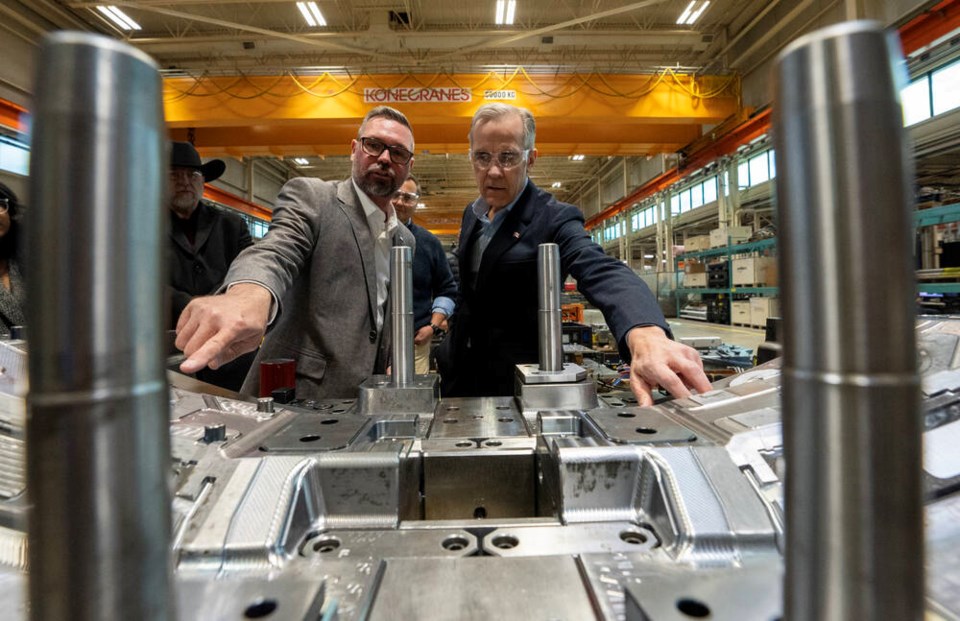The tariff war with the U.S. is ravaging several economic sectors — autos, metals, appliances and consumer goods — so a major revenue drop is all but certain. Increasing spending amid that reality seems bound to result in a record-setting deficit.

A commentary by a Canadian business leader who lives in Greater Victoria.
Running for election in 2015, Justin Trudeau said his government would incur a “modest short-term deficit” of less than $10 billion in each of its first three years and would balance the budget by the 2019-2020 fiscal year.
In fact, he ran nine consecutive deficits, peaking at $62 billion in fiscal 2023-24, and nearly doubled the national debt, taking it from $650 billion to $1.236 trillion.
Who would have thought a supposedly prudent former central bank governor would make Trudeau look frugal?
The recently released federal government spending plan, formally known as the Main Estimates, shows spending in the 2025-26 fiscal year will increase 8.4 per cent to $488 billion, plus at least $50 billion to service our burgeoning national debt, for a total of $538 billion.
Even if tax revenues hold steady, that implies a $40-billion deficit.
But the tariff war with the U.S. is ravaging several economic sectors — autos, metals, appliances and consumer goods — so a major revenue drop is all but certain.
Increasing spending in the face of that reality seems bound to result in a record-setting deficit. Since Trudeau took power in 2015, the Canadian dollar has fallen from 78 cents US to 73. Carney’s stunning plan to increase spending and the deficit will both accelerate inflation and take the loonie even lower.
In a June 13 FP Comment article, “Mark Carney was right: He’s not like Justin Trudeau, he spends more,” Franco Terrazzano of the Canadian Taxpayers Federation argues that Carney’s intensification of the Trudeau government’s debt-fuelled spending spree will raise interest costs sharply: “The government will spend $49 billion on interest this year and the parliamentary budget officer projects interest charges will be blowing a $70-billion hole in the budget by 2029.
“That means our kids and grandkids will be making payments on Ottawa’s debt for the rest of their lives.”
Which brings us to the matter of our country’s credit rating. An April 29 report by credit rating firm Fitch Ratings warns that “Canada has experienced rapid and steep fiscal deterioration, driven by a sharply weaker economic outlook and increased government spending during the electoral cycle.
“If the Liberal program is implemented, higher deficits are likely to increase federal, provincial and local debt to above 90 per cent of GDP.”
Our economy was in deep trouble long before U.S. President Donald Trump’s tariff wars.
Business investment per worker is a key predictor of productivity and living standards, yet as a C.D. Howe report put it last fall: “Investment per Canadian worker has been shrinking since 2015. When businesses invest, they equip workers with better tools, driving productivity, and, in turn, are able to offer workers higher wages and improved living standards. Canadian businesses now invest just 66 cents of new capital for every dollar invested by OECD counterparts and a mere 55 cents compared to the United States.”
How did Canada fall so far behind? The report’s policy to-do list suggests the answers:
1. Reform corporate taxes to encourage, not discourage, capital investment.
2. Implement a tax incentive for early investment.
3. Reduce the regulatory barriers that have stymied or delayed resource projects such as fossil fuels (so maybe Alberta won’t secede).
4. Promote IP investment through targeted tax incentives.
5. Fix policy uncertainty and streamline regulatory processes to create a predictable investment environment.
During the federal election campaign, voters were flooded with TV ads reminding them that Mark Carney led the Bank of Canada during the Great Recession — though Stephen Harper has said that his finance minister, the late Jim Flaherty, made all the tough decisions needed to restore national solvency.
The spending spree outlined in the Main Estimates reminds me of former U.K. prime minister Liz Truss’ judgment that “Mark Carney did a terrible job” at the Bank of England.
“He printed money to a huge extent, creating inflation.”
At the end of what is known as “The lost Liberal decade,” Canada’s GDP per capita is just $53,431 compared with America’s $82,769 (with both values in current USD).
Moreover, from 2014 to 2024, it grew just 1.1 per cent, second worst in the OECD, ahead of only Luxembourg.
Canada is a great country and Canadians are a great people — whose worst fault is how credulous they can be.
They were fooled by Carney’s image as the great global banker — a great banker who is putting Canada’s credit rating in jeopardy.
It pains me to say so but my fear is Canadians face further declines in their living standard and inflationary reductions in the value of their hard-earned savings.
Winston Churchill famously said that democracy is the worst form of government, except for all the others. That’s because “all the others” don’t have elections.
We can only hope for an early election that unseats Carney’s nation-impoverishing minority government.